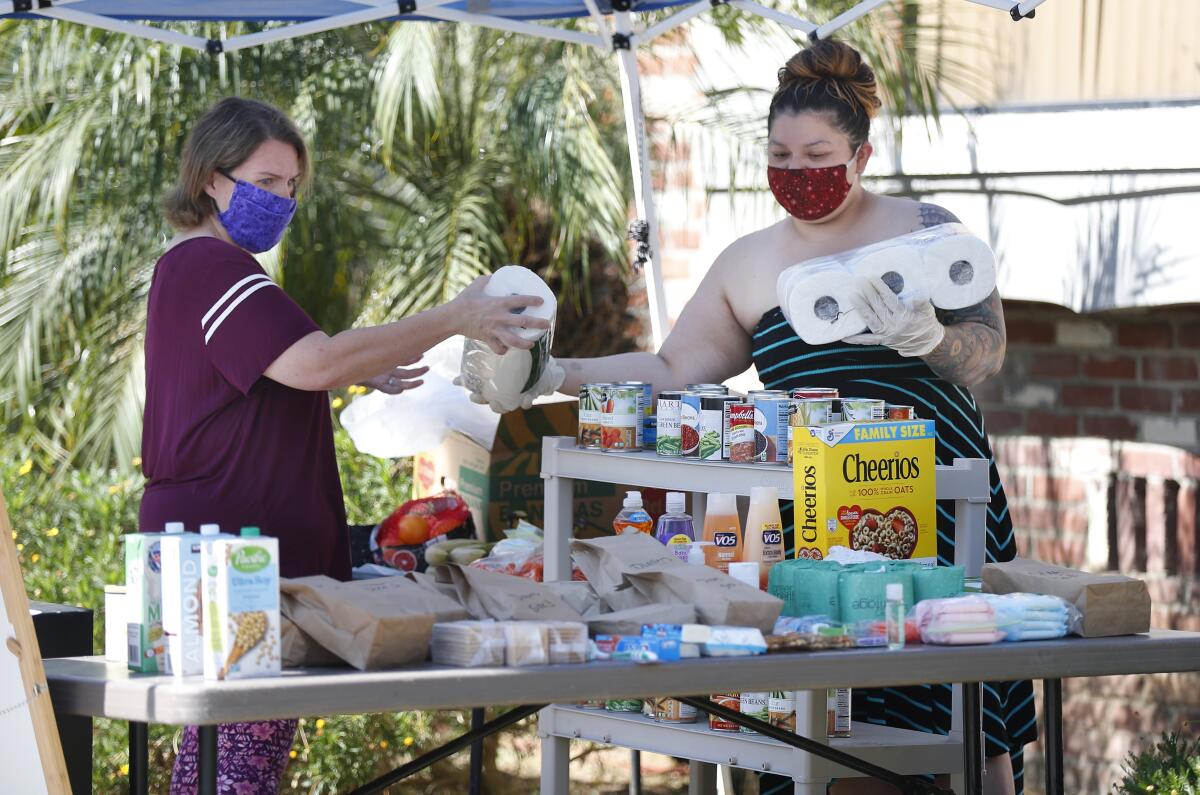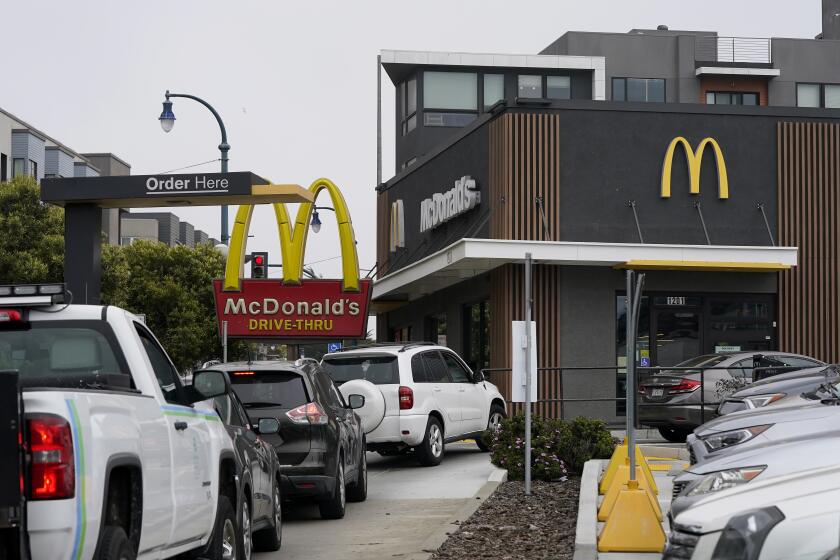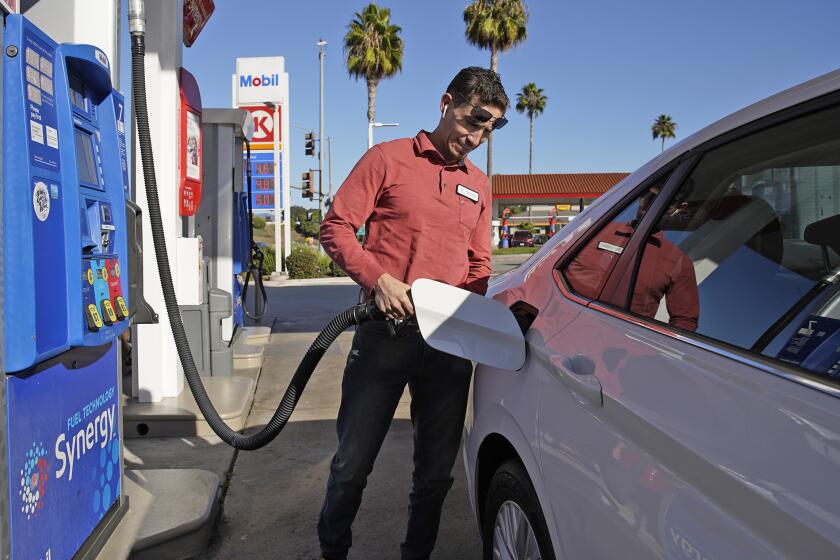San Diego unemployment hit 15% in April, highest ever recorded

San Diego County’s jobless rate was higher than the national average during the same time period.
San Diego County’s unemployment rate rose to 15 percent in April, its highest on record with data going back to 1990, state labor officials said Friday.
Early job losses tied to COVID-19 closures were hardest hit, especially in leisure and hospitality, which lost nearly 100,000 positions, but cuts were felt among all sectors of the local economy, even those not directly tied to stay-at-home orders.
California was hit particularly hard with jobless claims, which many analysts tie to some of the earliest quarantine orders in the nation. Adjusted for seasonal swings, the statewide unemployment rate was 15.5 percent and 14.7 percent nationwide.
In total, 195,000 jobs were lost in San Diego County from March to April, said the state Employment Development Department. Every employment category, from government to financial services, shed jobs.
The data comes as parts of California’s economy are starting to reopen, and it is expected at least some workers will return to jobs soon.
Ray Major, chief economist of the San Diego Association of Governments, said people will begin going back to work and the unemployment rate may begin to lower, but it is still unclear how many businesses will open. He said a real test for how long it will take for the economy to recover is to watch how many companies open in the next few weeks.
However, he said there are already numerous businesses — such as Souplantation — that have closed permanently and it will take workers time to retrain or find new places to work.
“Not everybody is going to be able to go back to work, so there is going to be a relatively high level of unemployment for a considerable amount of time,” Major said. “So it could take another year or two to work through the system.”
He noted state labor data was taken from mid-April when the lockdown had only been in effect for a few weeks, so many more jobs were lost after that. Also, Major said the state data only includes people who were able to apply for unemployment insurance, not everyone who was out of work. His association estimated the actual unemployment rate to be 30.1 percent by May 9.
April’s numbers are a major contrast from the same time last year when the unemployment rate in San Diego County was 3 percent. The county had added 20,400 jobs in a year. As of this April, the region has lost nearly 200,000 jobs in the last 12 months.
A major concern last year, which continued into the first few months of 2020, were worker shortages and staffing agencies reporting attempts to try and coax people back into the workforce.
Compared to the Great Recession, April’s numbers are worse. The highest unemployment got during that time period was 11.1 percent in 2010. Also, overall job losses provide a stark contrast: Annual average job losses from 2007 to 2008, the worst period for job cuts, saw around 50,000 positions lost — a quarter of April’s annual job losses.
Major said it took several years for the San Diego region to shed roughly 100,000 jobs during the Great Recession. He said it is nearly impossible to compare the two events because the pandemic caused a nearly complete shutdown of the economy.
“The Great Recession is like you are driving a car on the freeway going 65 mph and the car starts running out of gas and it starts to slow down,” he said. “This is slamming into a brick wall.”
Lynn Reaser, chief economist for the Fermanian Business & Economic Institute at Point Loma Nazarene University, said it’s possible the darkest days of this crisis are now behind us as the economy begins to reopen and, hopefully, many furloughed workers are brought back.
“How quickly jobs return, however, will be determined by regulations regarding reopening, consumer confidence over their safety in returning to shopping, and consumer buying power impacted by job or income losses,” she said.
Reaser said when the jobs numbers are adjusted for seasonal swings, the unemployment rate in San Diego County was 15.1 percent.
The job category with the biggest losses was leisure and hospitality, which lost 96,200 positions from March to April. Jobs in the category include hotel and restaurant jobs, as well as positions in gambling, recreation and amusement.
Increased business for grocery stores could not save retail jobs. There were 27,500 job losses in a variety of positions, especially in jobs related to clothing and department stores. Also, despite several local grocery stores adding new jobs during the crisis, it amounts to 500 new jobs in a year.
Other big losses were in professional and business services (employment services, building service) with 15,700 losses; government (local government education, state government education) with 6,600 losses; and manufacturing (transportation equipment manufacturing, aerospace product manufacturing) with 5,900 losses.
Also, the catch-all job category of “other services” lost 14,500 jobs, which includes heavy losses in laundry services, religious jobs and various repair and maintenance jobs.
Genine Wilson, the West Coast vice president at staffing agency Kelly Services, said there are a lot of companies trying hard to fill open positions, especially as temperature takers, at grocery stores and at organizations that build personal protective equipment. She said the problem they are facing is many potential workers are earning more on unemployment.
Until the end of July, the federal CARES act is giving unemployed workers an extra $600 a week on top of whatever state unemployment is giving. In some cases, but not all, Californians could be earning more on unemployment than their old jobs.
“No judgement, but some people are thinking if my unemployment is paying me as much as this job was, do I want to put myself at risk?” Wilson said. “It’s a weird tension that we’re feeling right now with the unemployment number being high and there still being organizations that are hiring.”
She said the biggest way for workers to stand out in hiring when this crisis is over is to be able to show they used the quarantine time to sharpen skills, not use it as a free vacation. Wilson said online classes are one way to show the time was well spent.
San Diego Workforce Partnership has jobs available on its website job portal (workforce.org) and some of the top employers are CVS Health, Home Depot, Lowe’s, Rite Aid, St. Paul’s Senior Services, and disabled services organization The Arc of San Diego.
State labor officials don’t seasonally adjust county-level data, but the March numbers show San Diego County had comparable numbers to the rest of Southern California at 15 percent.
Los Angeles County’s unemployment rate was 20.3 percent; Orange County was 13.8 percent; Riverside County was 15.3 percent; San Bernardino County was 13.4 percent and Ventura County was 14 percent.
Get U-T Business in your inbox on Mondays
Get ready for your week with the week’s top business stories from San Diego and California, in your inbox Monday mornings.
You may occasionally receive promotional content from the San Diego Union-Tribune.









